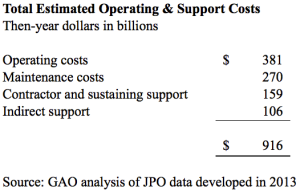Tags
Based in Fort Worth, Texas, the JSF F-35 program provides several important lessons about financial management:
- Begin with the end in mind
- Measurement inversion happens—manage it
- Don’t set arbitrary targets and then manage to them
- Develop adequate information before making decisions
- Use interval rather than point estimates
The November/December 2015 issue of the Journal of Corporate Accounting & Finance breaks down these lessons and sheds light on the world’s largest project to date, the trillion dollar to develop the F-35 Lightning II family of single-seat, single-engine, multirole fighter aircraft.
Here’s a closer look at the third lesson: Don’t set arbitrary targets and then manage to them
In his 1986 book, “Out of the Crisis”, W. Edwards Deming laid out 14 key principles for managing. Deming’s eleventh point: Eliminate arbitrary numerical targets…Substitute aids and helpful leadership….
Deming based this point on the idea that it is useless to specify a goal without developing a method for achieving it. The U.S. Government Accountability Office has been critical of Department of Defense (DOD) affordability efforts:
When the DOD established affordability targets for the F-35 program in 2012, the methodology…was not informed by actual resource constraints….Specifically, DOD officials stated that targets were determined by arbitrarily lowering…estimated F-35 Cost per Flight Hour by 10 percent….
The JSF F-35 program is massive—unprecedented in size. It has scored many successes.
Along the way, it has offered many lessons for us to consider. You can read about them in the Journal of Corporate Accounting & Finance, 2015 (November/December) and also here.

You must be logged in to post a comment.